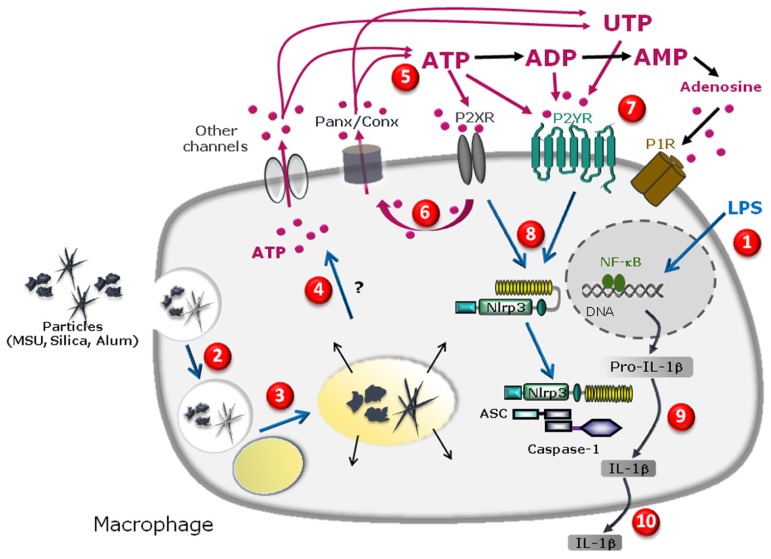FIGURE 1.
Schematic diagram illustrating the specific cascade and signaling pathway in LPS-primed macrophages stimulated with MSU, silica, or alum salt crystals. LPS priming induces transcription of pro-IL-1β gene and other genes in the nucleus upon activation of the transcription factor NFkB and subsequent production of pro-IL-1β protein in the cytosol (1). Particle internalization (2), fusion to lysosome (3) and further phagolysosome destabilization may lead to cathepsin leakage (4) which precedes pannexin/connexin (Panx/Conx) hemichannel and purinergic signaling-dependent intracellular ATP release (5). Extracellular ATP may act through P2X7 receptor to amplify ATP release in a P2X7 receptor-dependent way (6). ATP, UTP, or their derived degradation products such as ADP, UDP, and adenosine, generated by ecto-endonucleases, may act through an autocrine loop on other purinergic receptor P2X, P2Y, and/or P1 receptors (7) leading to NLRP3 receptor activation (8). This allows inflammasome complex formation and maturation of pro-IL-1β to IL-1β production (9) and IL-1β secretion (10).

